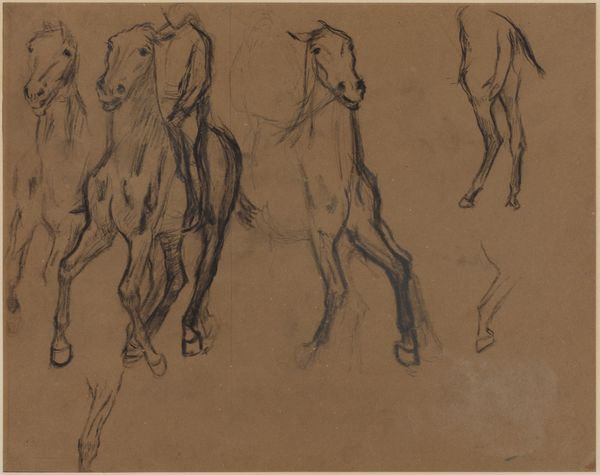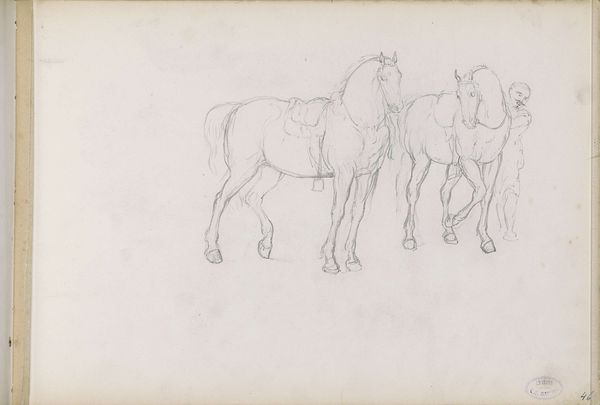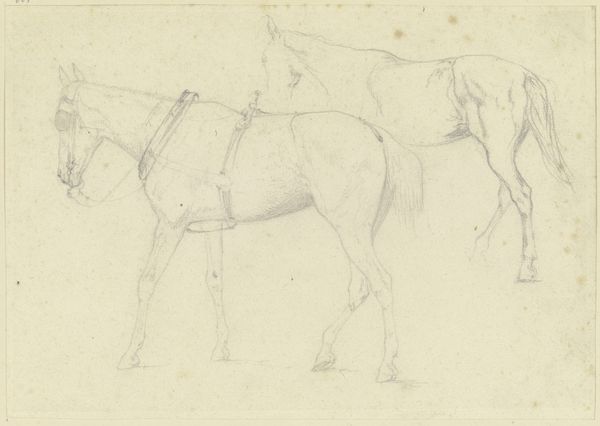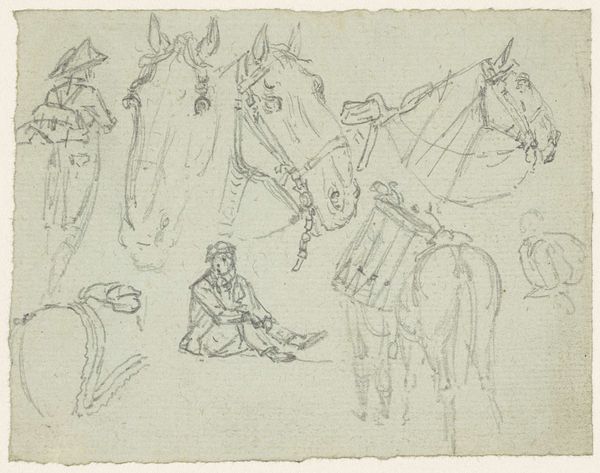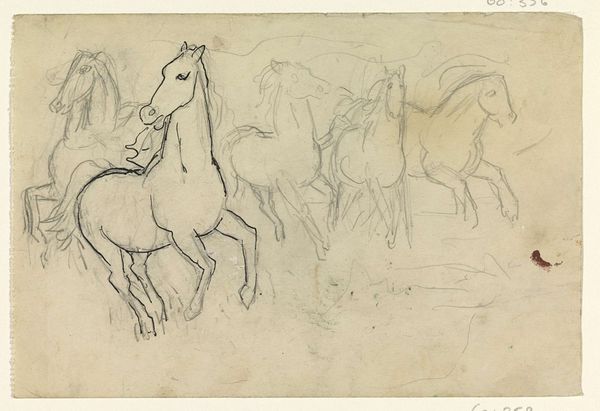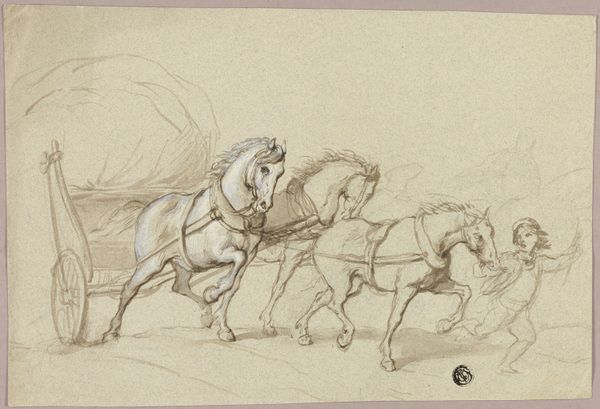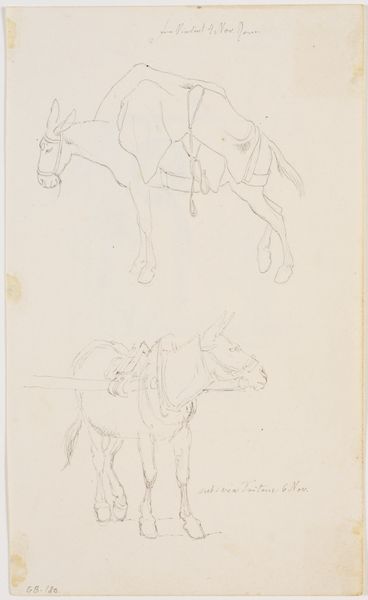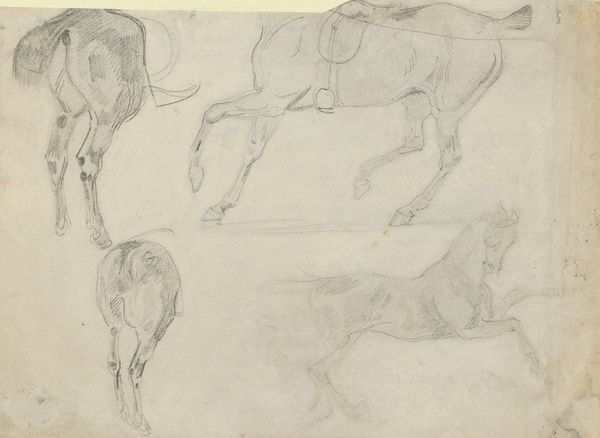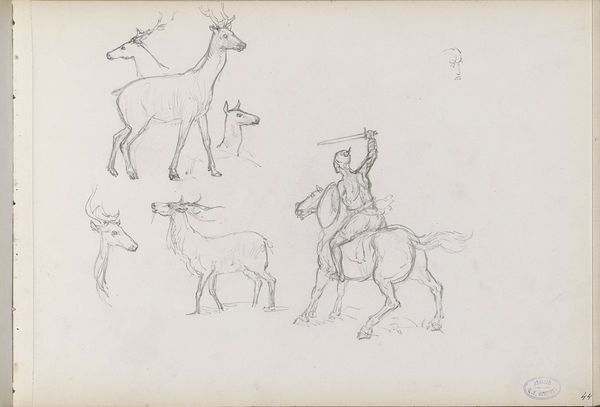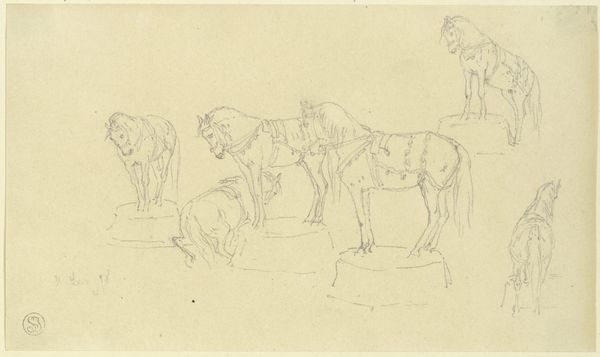
drawing, paper, pencil
#
drawing
#
landscape
#
figuration
#
paper
#
pencil
#
academic-art
Copyright: Public Domain
Curator: Looking at this, I feel an immense sense of latent energy, poised just before an explosion of movement. Editor: This is August Lucas's "Study of Horses, at a Trot," a pencil drawing currently held at the Städel Museum. What you’re responding to is Lucas’s superb capturing of the animal's form and latent power. Curator: It's almost like the anticipation before a race, right? He captures such grace, even in these raw, preparatory sketches. Editor: Absolutely, it exemplifies the academic style, a focus on precise anatomical study and classical composition. But also, it can be understood as documentation, the beginnings of breeding and racing records. Consider who got to participate in leisure activities, during that period, or not. Curator: I hadn't really considered the element of... exclusion. But returning to the pure aesthetic of the piece, you have to marvel at how, with just a few pencil strokes, he conveys so much about the texture of the horses' coats, the muscularity. It is very simple, it does feel so charged and kinetic. What is drawing me in? It's like a whispered secret that he shares with me, right? Editor: Precisely. The seeming effortlessness with which Lucas renders these magnificent animals could even point towards class dynamics in access to horses during the artist’s lifetime. What about the social context and equestrian culture is relevant in this instance? Is he perhaps hinting to, if subtly, at its politics? Curator: Okay, I hadn't thought of it like that, but I do like thinking that August is using such an academic form of portraiture for a more anarchic expression, one that suggests the chaos of a horse on the verge of an escape. So thanks, in a roundabout way, for taking me from A to Z today. Editor: My pleasure. It’s crucial to read artworks with their political implications always in view, so we are aware of the potential of biases involved in a work’s inception.
Comments
No comments
Be the first to comment and join the conversation on the ultimate creative platform.

